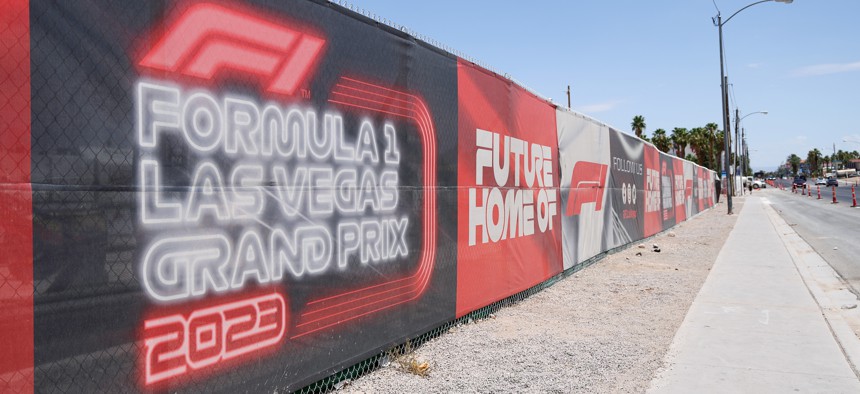Preparations accelerate for Las Vegas’ first Formula One race

Matthew Ashton - AMA/Getty Images
Hundreds of thousands of people are expected to descend on the Strip next month for the Las Vegas Grand Prix. For the city, as it repaves roads and upgrades its infrastructure, the event is also an investment.
The Las Vegas Strip and its line of resorts, restaurants and entertainment venues will soon be a sounding board for the roar of 20 Formula One race cars as they speed by on a 3.8-mile circuit past some of the city’s most famous landmarks for the first time next month.
Local leaders expect hundreds of thousands of fans, team officials and other dignitaries to descend on the Strip for race weekend, which kicks off at 10 p.m.on Nov. 18. But before lights out, local officials have a lot of work to do to get ready.
The clock started ticking as soon as “the date for the race got established,” said Bob Leek, chief information officer for Clark County, Nevada. “For those of us that are versed in project management, when you fix time, that means scope, schedule and quality are the variables that you have to work with.”
With a little over a month to go, work on a permanent paddock building that houses the teams’ pit areas and other facilities is nearly complete. As is most of the paving along the course and installation of track lighting, which is necessary for a night race. Construction crews are in the process of installing makeshift bridges to allow pedestrians and vehicles to pass over the circuit and into the various resorts and casinos along the Strip. Those bridges will eventually become permanent, but given the time constraints, are temporary for this year’s race.
Leek said the total investment is around a half billion dollars for security and infrastructure improvement. But the county estimates that the Las Vegas Grand Prix could bring in more than $1 billion to the region over the three-day event. The current contract with Formula One is for three years, but officials are hoping to cash in on a longer-term partnership: In February, the Clark County Commission approved a resolution that recognizes it as an annual event through 2032.
That’s why the county is investing in permanent infrastructure upgrades like the pedestrian bridges and the paddock building, which is located in a previously underdeveloped area behind the Strip. For Leek, that has meant both short-term and long-term planning. There have been “punch lists of punch lists,” he said.
One item on that list is security. The Las Vegas Grand Prix is one of more than 20 on the Formula One calendar this year, and one of three in the U.S. Leek and other local officials have drawn heavily from their counterparts in Austin, Texas, and Miami, the other two cities to host Formula One races in recent years, to plan and prepare. With Las Vegas also set to host the Super Bowl in February, Leek said he met with officials in the Phoenix metropolitan area, which has hosted a Super Bowl and golf’s wildly popular Waste Management Open.
Hosting major sporting events requires massive interagency planning and preparation, as state, local and federal agencies all team up to deliver a safe event. The Super Bowl in Los Angeles last year, for example, involved more than 10 federal agencies, 13 local law enforcement departments and thousands of officers; bomb sniffing dogs; cybersecurity measures; military aircraft, helicopters and drones; and numerous other measures.
Leek said the guiding principles in all the interagency meetings and planning efforts is that the race happens in a “safe and prudent manner,” that the “fan experience meets most everyone's expectations” and that the “public infrastructure that's left behind is sustainable.”
Despite the pressure of hosting its first-ever Formula One race, Leek said Las Vegas and Clark County are used to holding major events. Formula One is “just a big project that's coming to town,” Leek said. “It's the epitome of what we do,” he added. “It's a boom time for us right now.”






